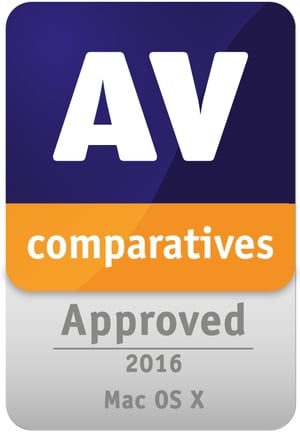Avast Free Mac Security had an 100% detection rate on both AV-Comparatives‘ Mac Malware Protection and Windows Malware Detection tests.

AV-Comparatives have released their 2016 Mac Security Test & Review, which focuses primarily on the security of Mac systems. When describing the significance behind the report, AV-Comparatives says:
“. . . it is necessary to understand that a computer virus is only one of a number of different types of malware (malicious software). These days, viruses make up a small percentage of all known malware; Trojans (malicious programs disguised as e.g. games or music files) are much more common. Whilst the number of actual viruses affecting Mac OS X may be negligible or even zero, Mac systems clearly can be infected by Trojans, if users are fooled into installing them.“
How AVs stack up on OS X 10.11.5 El Capitan
As the first segment of the 2016 Mac Security Test & Review, AV-Comparatives conducted a Mac Malware Protection test, which analyzed the 50 most-recent Mac malware samples, including the notorious, malicious KeRanger and OceanLotus programs.
Taking the tested products‘ capabilities a step further, AV-Comparatives then checked each Mac antivirus product's detections of Windows malware. For this test, the organization made use of 250 prevalent samples of Windows malware in a procedure identical to that of the Mac malware test.
Avast Free Mac Security had a 100% detection rate on both AV-Comparatives‘ Mac Malware Protection and Windows Malware Detection tests! AV-Comparatives praises Avast Free Mac Security in an analysis of the product:
“We feel Avast Free Mac Security has all the important features of an antivirus program and is largely very simple to use. We particularly liked the informative and persistent malware alerts. Protection against Mac malware in our test was flawless.“
Macs need some TLC, too
In the report, AV-Comparatives walks readers through the following list of simple things they can do to keep their Mac’s security in tip-top shape:
As with Windows computers, Macs can be made safer by employing good security practices. We recommend the following:
- Do not use an administrator account for day-to-day computing
- Use a sandboxed browser such as Google Chrome
- Uninstall/disable the standalone Flash Player
- Uninstall/disable Java unless it is essential for you
- Keep your Mac operating system and third-party software up-to-date with the latest patches
- Use secure passwords (the Mac includes the KeyChain password manager)
- Deactivate any services such as Airport, Bluetooth or IPv6 that you don’t use
- Be careful about which programs you install and where you download them from